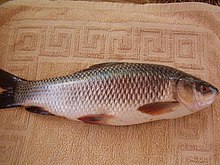Carp are a type of freshwater fish that are popular among anglers. They belong to the cyprinid family, which contains other well-known fish such as the minnow and goldfish. Carp are native to Europe and Asia, but they have been introduced to other parts of the world, including North America, South Africa, and Australia.
There are many different types of carp, and they can vary considerably in size, color, and shape. The most common carp in the United Kingdom are the common carp, mirror carp, grass carp, crucian carp, koi carp, and leather carp. These will be discussed in more detail in the first half of this post.
The second half of the post will be devoted to some of the other carp species that are now found around the world, as a result of introduction by humans. These include the Chinese grass carp, bighead carp, and silver carp. Some of these species have become invasive, and are causing problems in the ecosystems where they have been introduced.
-For beginner carp anglers differentiating between each species and sub-species can be somewhat confusing as there are so many types of carp but really it’s not that difficult at all.
-Each has its own distinct features and with a bit of knowledge can be easily identified and that is what this post is for.
Most Popular Types of Carp
Common Carp
As anglers, we are always looking to improve our skills and learn more about the fish we target. In this post, we will be discussing the common carp, also known as the European carp or Cyprinus carpio.

This bottom-feeding species is one of the most common fish in commercial fisheries, but don’t let that fool you – they can still put up a good fight! Oftentimes, fisheries will stock mirror carp in larger numbers than commons, so catching a big common is an exhilarating experience.
Native to Europe and Asia, common carp have been introduced into nearly every part of the world and have been farmed for food dating back to Roman times. Nowadays in the UK, they are mostly stocked for the satisfaction of anglers. In the Czech Republic, Poland, and Slovakia, carp are sometimes eaten as part of their Christmas dinner.
The world record common carp currently stands at a massive 64lbs (as of March 2018) and was caught in Avenue syndicate in Shropshire.

– The common carp is a bottom-feeding fish that is sometimes referred to as the European Carp or Cyprinus carpio.
– Though this fish is commonly found in commercial fisheries, it can be quite a thrilling experience to hook into a massive common carp.
-Native to Europe and Asia, the common carp has been introduced into nearly every part of the world and has been farmed for food dating back to Roman times.
– Today, the common carp is classified as an invasive species and is included in the list of the top 100 invasive species.
Features of Common Carp
If you’re an angler who’s looking to learn about the different types of carp fish, then you’ve come to the right place. In this blog post, we’ll be discussing the distinctive features of common carp.
Common carp are a type of freshwater fish that is native to Europe and Asia. They’re a popular choice for anglers because they’re relatively easy to catch and can grow quite large.
One of the most distinctive features of common carp is their scales. These scales range in color from grey to bronze and provide good camouflage for the fish in their natural environment. Common carp also have four barbels and a large, elongated dorsal fin.
“Domestic” carp, which are raised in captivity, can grow much larger than their wild counterparts.
Common carp have large mouths, which allows them to eat baitfish such as boilies. If you’re looking to catch a common carp, then using the right bait is essential.
Now that you know a little bit more about common carp, we hope that you’ll be able to identify them the next time you’re out on the water. Happy fishing!
Mirror Carp
Mirror carp are visually different from common carp as they have irregular and patchy scales shown in the picture above.

All mirror carp’s scale patterns are different giving them a sense of character.
Mirror carp tend to have a rounder appearance than common carp.
Mirror carp also have large mouths just like the commons and have two barbells at each side of their mouths.
If you’re a carp angler, then you’re probably well-versed in the different types of carp out there. But if you’re new to the sport (or just looking to learn more), then you might not know all the different types of carp that are out there. Today, we’re going to take a look at one of the most popular types of carp – the mirror carp.
Mirror carp are a subspecies of the common carp and were the first mutation of common carp. biologically, mirror carp are almost identical to their predecessor, the common carp. The lack of scales found on the mirror carp is commonly thought to be from the breeding of monks to make the fish easier to consume as fewer scales have to be removed before serving. Mirror carp are thought to have been introduced into Britain in the 15th century as a food source.
Nowadays, mirror carp are mainly bred and introduced into commercial fisheries for us anglers. Like the common carp, they fight extremely well and grow to unreal sizes in the right environments. As well as breeding for fewer scales, mirror carp were also bred to grow to greater sizes than commons which can be clearly shown by the most recent world record.
The reason for this is that commons take a lot of energy growing scales covering their full body whereas mirror put this energy to growing in overall size rapidly. The world record mirror carp stands at an unbelievable 108lbs (November 2018) and was caught in Hungary at Euro Aqua fishery.
Features of Mirror Carp
Mirror carp are visually different from common carp as they have irregular and patchy scales (as seen in the picture above). All mirror carp’s scale patterns are different, giving them a sense of character. Mirror carp tend to have a rounder appearance than common carp. Mirror carp also have large mouths just like the commons and have two barbells at each side of their mouths.
Whether you’re a seasoned pro or just getting started in the world of carp fishing, hopefully this has helped you learn a little bit more about one of the most popular types of carp out there – the mirror carp. So next time you’re out on the water, keep an eye out for these distinctive fish and see if you can reel one in!
Grass Carp
Native to China, the grass carp is a species of carp that was introduced into many countries worldwide for aquatic weed control. In the UK, they were first introduced on the Lancaster Canal as part of an experiment conducted by British Waterways and the University of Liverpool.
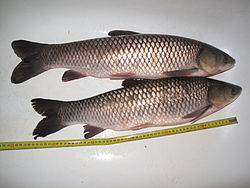
One of the reasons the grass carp is so popular for weed control is because they reproduce in water temperatures over 20 degrees Celsius – meaning they can’t reproduce naturally in the UK. This allows their population to be carefully controlled by environmental agencies.
It was initially thought that grass carp would take little interest in commercial fishing baits, but this was soon proven wrong as more and more anglers started catching them. This is likely because they grow rapidly, due to their diet of up to three times their body weight each day!
If you’re looking to catch grass carp, they can be found at selective fisheries including Badshot Lea, Mill lane, Little Moulsham Lake, and of course the Lancaster Canal. In fact, Little Moulsham Lake produced a grass carp of nearly 52lbs in August 2018.
Features of Grass Carp
So what do these fish look like? They’re quite dark, ranging from yellowish to brown in colour. They’re also longer and slimmer than other types of carp, with a torpedo-like body shape and lack of barbels beside their mouths. Additionally, their anal fin is located closer to the tail.
One of the easiest ways to tell a grass carp apart from other types of carp is by looking at the dorsal fin – it’s smaller and not as long as commons or mirrors. They also have low flat heads, and their mouths are much smaller than mirrors and commons.
So there you have it – everything you need to know about grass carp! The next time you’re out on the water, keep an eye out for these fish and see if you can add one to your catch!
Leather Carp
Some believe that the leather carp is a mirror carp with no scales. This is not the case, however, as leather carp have some distinct genetic differences from mirrors. For example, they have fewer red blood cells than mirrors or commons, which stunts their growth. Due to this, catching a giant leather carp is quite an achievement.

Other anglers believe that the lack of scales makes the fish more difficult to catch, as they are harder to hook and often slip off the line. However, many experts believe that the true challenge in catching a leather carp lies in finding them in the first place. They are rare fish, and are often only found in specific areas of lakes or rivers. So, if you’re looking to add a leather carp to your trophy collection, be prepared for a bit of a search. But trust us, it’ll be worth it.
Features of Leather Carp
As their name suggests, leather carp have skin that looks almost like leather. This makes them fairly easy to identify. They also tend to be a bit smaller than other carp species, with colours ranging from dark green to dark bronze. Another distinctive feature is the anal fin, which often has fewer rays than commons and mirrors. The dorsal fin is also often imperfect.
All in all, the leather carp is a challenging and rewarding fish for any carp angler looking to add something new to their repertoire. So next time you’re out fishing, keep an eye out for this rare and elusive creature. You just might get lucky!
Crucian Carp
The Crucian Carp is the smallest member of the carp family. They are widely found across Europe, and can even survive in extremely cold waters. Catching a large crucian carp can be challenging, as they are very delicate feeders. If you are targeting these fish, they can usually be found near drop-offs into deep water.
They can survive in conditions that many other fishes cannot deal with, including the smallest of weedy, muddy pools to extremely cold waters.
As carp are able to withstand a variety of different environmental conditions, they can often be found in places where other fish cannot survive. This can make them difficult to target for carp anglers. However, if you are specifically targeting carp, they can usually be found near drop-offs into deep water. Keep in mind that carp can be frustrating to catch, but the rewards can be well worth it.
Features of Crucian Carp
The crucian carp is a small member of the carp family. It is widely distributed across Europe, and can even be found in Scandinavia and the Arctic Circle. The crucian carp is a hardy fish that can survive in a variety of conditions, from small, weedy pools to cold waters.
Catching a large crucian carp can be challenging, as they are delicate feeders. Even a 2lb fish is considered a great catch. The crucian carp tends to nudge the bait and suck gently to check for hooks, which can be frustrating for anglers targeting these fish. However, if you are targeting crucians, they can usually be found near drop-offs into deep water.
The crucian carp is usually golden or bronze in color and darkens with age. It has yellow or orangeish fins and is quite tall when mature. The crucian carp do not have barbells.
Koi Carp
In the 1820s, Japanese breeders in the town of Ojiya first bred Koi carp for their bright colours.
The word “Koi” simply translates to “carp” in Japanese. Outside of select areas in Japan, the Koi carp was not seen by the outside world until 1914, when they were displayed at a public exhibition in Tokyo.

After this, the popularity of Koi carp spread quickly and many new variations were bred. Keeping Koi carp as a hobby became popular across the world. There are now thought to be more than 22 varieties of Koi, with new variations being actively developed. Each variety has certain distinct colours, patterns and scalings.
Koi have been released into nearly every continent, except Antarctica. However, they quickly revert to the colouration of common carp in only a few generations.
Keeping Koi in a pond puts them at a severe disadvantage against predators.
Due to their highly visible colouration, predators including herons, badgers, otters, foxes and even cats can empty a full pond of Koi if measures aren’t taken to avoid this.
Well-designed ponds have areas too deep for Herrons to stand, overhangs so mammals can’t reach in and trees above the ponds so any birds flying past can’t spot their next meal in the water.
Many carp lakes in the UK stock a few Koi and you can even find a dedicated Koi fishing pond at Anglers Paradise in Devon.
Features of Koi Carp
As an angler who is interested in learning about koi carp, one of the most distinctive features of these fish is their bright and vibrant colors. Koi carp come in a wide variety of colors, including white, black, red, orange, yellow, blue, and cream. In addition to their wide range of colors, koi carp also have a wide range of patterns. These patterns can make it easy to identify koi carp among other fish species.
In terms of shape, koi carp are very similar to goldfish. However, there are two key differences between these two types of fish. First, koi carp grow to much larger sizes than goldfish. Second, koi carp have two barbels on their face, while goldfish do not. These barbels are used to help the koi carp feed on small organisms in the water.
Overall, koi carp are a beautiful and unique fish species that any angler would be lucky to catch. If you are interested in learning more about these fish, be sure to ask your local fishing guide or tackle shop owner for more information.
F1 Carp
If you’re a carp angler, then you’ll want to learn about F1 carp. These fish are relatively new to the UK, but they’re quickly becoming one of the most popular species to stock.

F1 carp are hybrids between common and crucian carp, so they’re smaller than commons or mirrors. This cross-breeding occurs naturally in the wild, but these fish are also widely bred for stocking commercial fishing waters.
F1 carp feed all year round and grow rapidly. This is one of the reasons why this new species of carp is in such high demand. Although they grow quickly, they don’t usually reach the massive sizes of other carp species. The world record F1 carp currently stands at 7lbs and 14ozs, caught in 2016 at Manor Farm leisure.
Features of F1 Carp
F1 carp can be hard to identify since they look a lot like smaller commons. One way to determine if you’ve caught an F1 carp is to look at the number of barbells. F1 carp only have two smaller barbells compared to commons’ four larger ones. So, if you’re looking for a new challenge in carp fishing, give F1 a try!
Ghost Carp
If you’re an experienced carp angler, you may have seen a ghost carp or two in your time. These fish are fairly uncommon, but can be found swimming in some UK fisheries.
Ghost carp are a result of breeding between common carp and two koi variations – the Purachina Koi (which produces white ghost carp) and the Yambuki (which produces yellow ghost carp). They tend to grow faster than pure-bred koi and can compete for food with all variants of the carp family.

Ghost carp are easy to distinguish due to their abnormal colouration. Their striking white or yellow colours make them easy to spot. They commonly have darker scales along their back and dark markings on their heads. They are similar to common carp with full-scale patterns and elongated dorsal fins.
If you’re lucky enough to catch a ghost carp, you’re in for a treat! These fish typically live up to 30-70 years in the UK, so you can be sure it will be a trophy catch that lasts a lifetime.
Other Species of Carp from Around the Globe
There are four main types of carp that have been introduced to the United States: black, bighead, rohu, and grass. All of these fish are considered to be invasive species because they compete with native fish for food and resources.
Black and bighead carp are also known to spread disease. Fishing for carp is popular in their native countries, and the fish are considered to be a delicacy in some parts of Asia. The rohu is also used in traditional medicine. All of these fish can cause havoc on native ecosystems if they are introduced into non-native waterways.
Silver Carp
Silver carp are found in Asia, and have been introduced to North America and Europe. They are often found in rivers and lakes. They are often used in aquaculture, and are considered to be a delicacy in some parts of the world. Silver carp are known for their ability to jump out of the water, and have been known to injure people who are swimming or boating near them.

Silver carp are filter feeders, and their diet consists primarily of phytoplankton and zooplankton. They are also known to eat small fish, insects, and crustaceans.
The silver carp is a fish similar to the bighead carp in many ways, native to the same areas and of comparable size. The main difference between the two is the silver carp’s tendency to leap out of the water when disturbed. This fish has become a massive issue for the native ecology of waters it inhabits outside of its natural range due to escaping from commercial fish farms. In terms of sport fishing, silver carp are very difficult to target because they are filter feeders. Bowfishing has become popular in areas where asian carp are present. Some companies have taken advantage of this by using the fish for food or netting them for their supply.
Silver carp are a species of fish that can reach a large size, with a maximum weight of around 100 pounds and a maximum length of 55 inches. However, fish of these sizes are incredibly rare. Silver carp are a massive issue for the native ecology of waters they inhabit that are not native silver carp waters.
As of now, they have spread to 88 different countries. These fish have been introduced to many waters due to escaping from commercial fish farms during accidents or flooding and in some cases were introduced on purpose for reasons such as water quality control or as an “enhancement” to wild fisheries.
Silver carp pose a serious threat to the native ecology because they compete with native species for food and resources.
In some cases, they have even been known to jump out of the water and injure people.
Black Carp
Black carp are similar to grass carp in appearance, but they are much darker in color. They are native to East Asia, from China and Vietnam. Black carp have been introduced to the United States as well.

Black carp are used in aquaculture to control pests. In some cases, black carp were intentionally introduced to control invasive snails and mussels. However, no state in the United States allows for the intentional release of black carp into any waterway.
Fishing for black carp is popular in its native areas and the fish is a prized delicacy in parts of Asia. In China, black carp is also popular for traditional medicinal beliefs.
The black carp is a dark-colored fish native to east Asia. It is used in aquaculture for pest control, and has also been introduced to the United States in some form. Black carp can wreak havoc on native snail and mussel species if they get into non-native waterways. Fishing for black carp is popular in its native areas, and the fish is considered a delicacy in some parts of Asia.
Bighead Carp
Bighead carp are a large freshwater fish that is native to East Asia. They can grow up to four feet long and weigh up to 100 pounds. Bighead carp are a popular food fish in many Asian countries. They are also used in traditional Chinese medicine.

Bighead carp are considered to be an invasive species in many parts of the world. They compete with native fish for food and habitat. They can also spread disease. Bighead carp were first introduced into the United States in 1973. They have been found in all states except Alaska.
Rohu Carp
A rohu carp is a freshwater fish that is native to South Asia. It is an important food fish in the region and is also widely exported. The rohu is a large fish, growing up to 1.8 meters in length and weighing up to 30 kilograms. The body of the rohu is elongated and cylindrical, with a long, blunt head. The eyes are small and located on the sides of the head. The mouth is large, with sharp teeth that point inward. The rohu has two pairs of barbels on the lower jaw, which help it to locate food.
The body of the rohu is covered with scales that are large and tough. The color of the body varies from light brown to greenish-grey, with a whitish belly. The rohu is an excellent swimmer and can reach speeds of up to 18 kilometers per hour. It is a carnivorous fish and feeds on other fish, crustaceans, and insects.
The rohu is found in rivers, lakes, and ponds across South Asia. It prefers deep water and is often found in schools. The rohu spawns during the monsoon season, when water levels are high. The female lays up to 10 million eggs, which are fertilized by the male. The larvae hatch after about two days and grow rapidly. They reach maturity within two years.
The rohu is an important food fish in South Asia and is also exported to other countries. It is usually fried or cooked in curry. The rohu is also used in traditional medicine, and the oil from its body is believed to have medicinal properties.
Conclusion
Carp is a very popular fish to catch, and there are many different types that can be found around the world. In this post, we have looked at some of the most common carp in the United Kingdom, as well as some of the other species that have been introduced by humans.
Some of these species have become invasive, and are causing problems in the ecosystems where they have been introduced. If you have caught any of these carp when fishing, let me know in the comments!
FAQ
Q. What are the different types of carp?
A. There are many different types of carp, but the most common in the United Kingdom are the common carp, mirror carp, and leather carp. Other species that have been introduced by humans include the black carp, bighead carp, and rohu carp. Some of these species have become invasive, and are causing problems in the ecosystems where they have been introduced.
Q. What are the differences between common carp, koi carp, and goldfish?
A. Common carp, koi carp, and goldfish are all members of the carp family. Common carp are the most widespread species of carp, and can be found in ponds, lakes, and rivers across Europe, Asia, and North America. Koi carp are a domesticated form of common carp that is popular in Japan. Goldfish are a domesticated form of common carp that is popular in China. All three species are used in traditional medicine and are considered to be auspicious symbols. Common carp, koi carp, and goldfish all have scales and barbels, and prefer to live in freshwater habitats. However, goldfish can also tolerate brackish water and live in saltwater aquariums. Common carp and koi carp are both used as food fish, but goldfish are not typically consumed.
Q. What is the difference between a mirror carp and a leather carp?
A. Mirror carp is a type of carp that has a shiny, metallic appearance. Mirror carp are the largest type of carp, and can grow up to 1.8 meters in length and weigh up to 30 kilograms. Leather carp are a type of carp that have dark-colored skin with a rough texture. Leather carp are smaller than mirror carp, and can grow up to 1 meter in length and weigh up to 10 kilograms. Both mirror carp and leather carp are found in Europe, Asia, and North America. Mirror carp are more common in ponds and lakes, while leather carp are more common in rivers. Both types of carp are used as food fish.
Q. What are the rarest types of carp?
A. Black carp and bighead carp are the rarest types of carp. Black carp are native to East Asia and were introduced to North America in the 1970s. Bighead carp are native to China and were introduced to North America in the 1960s. Both species have become invasive in the United States, and are causing problems in the ecosystems.
Q. What is the most common type of carp?
A. The most common type of carp is the common carp. Common carp are native to Europe and Asia, and can be found in ponds, lakes, and rivers across the continents. Common carp are the most widespread species of carp, and are also popular in aquaculture. Mirror carp, koi carp, and goldfish are all domesticated forms of common carp.
Further Reading

Night Fishing Essentials | The Ultimate Checklist
This is the ultimate checklist of night fishing essentials. When darkness falls, it is important that you are comfortable when night fishing for carp and have the right equipment to have a successful session. Night fishing is very different from day fishing. I'll take...

Best Lightweight Fishing Chair for Anglers
If you love fishing but hate lugging around a heavy chair, then you need a lightweight fishing chair! These chairs are easy to transport and set up, so you can focus on enjoying your time outdoors. Plus, they come with features like storage pockets, rod holders, and...
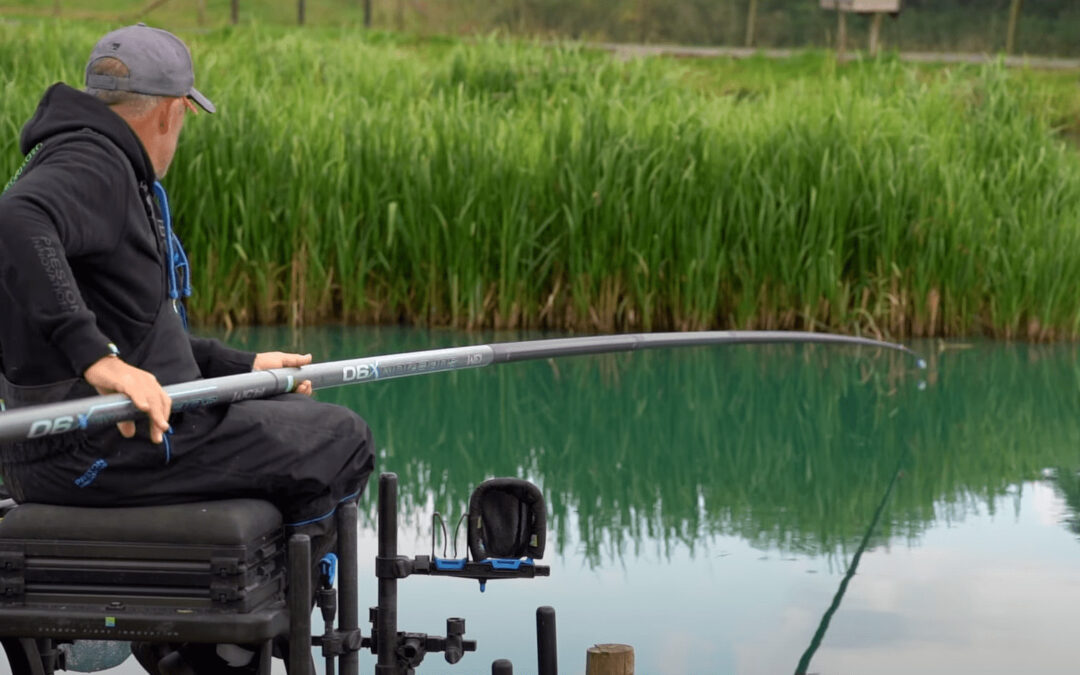
How to Choose the Best Fishing Pole for Any Serious Angler!
Things to consider when choosing the best fishing pole for you A long pole is a serious investment, especially if you’re planning on using it for the first time. There are several steps that you should take before you start fishing. Before you start fishing, make sure...
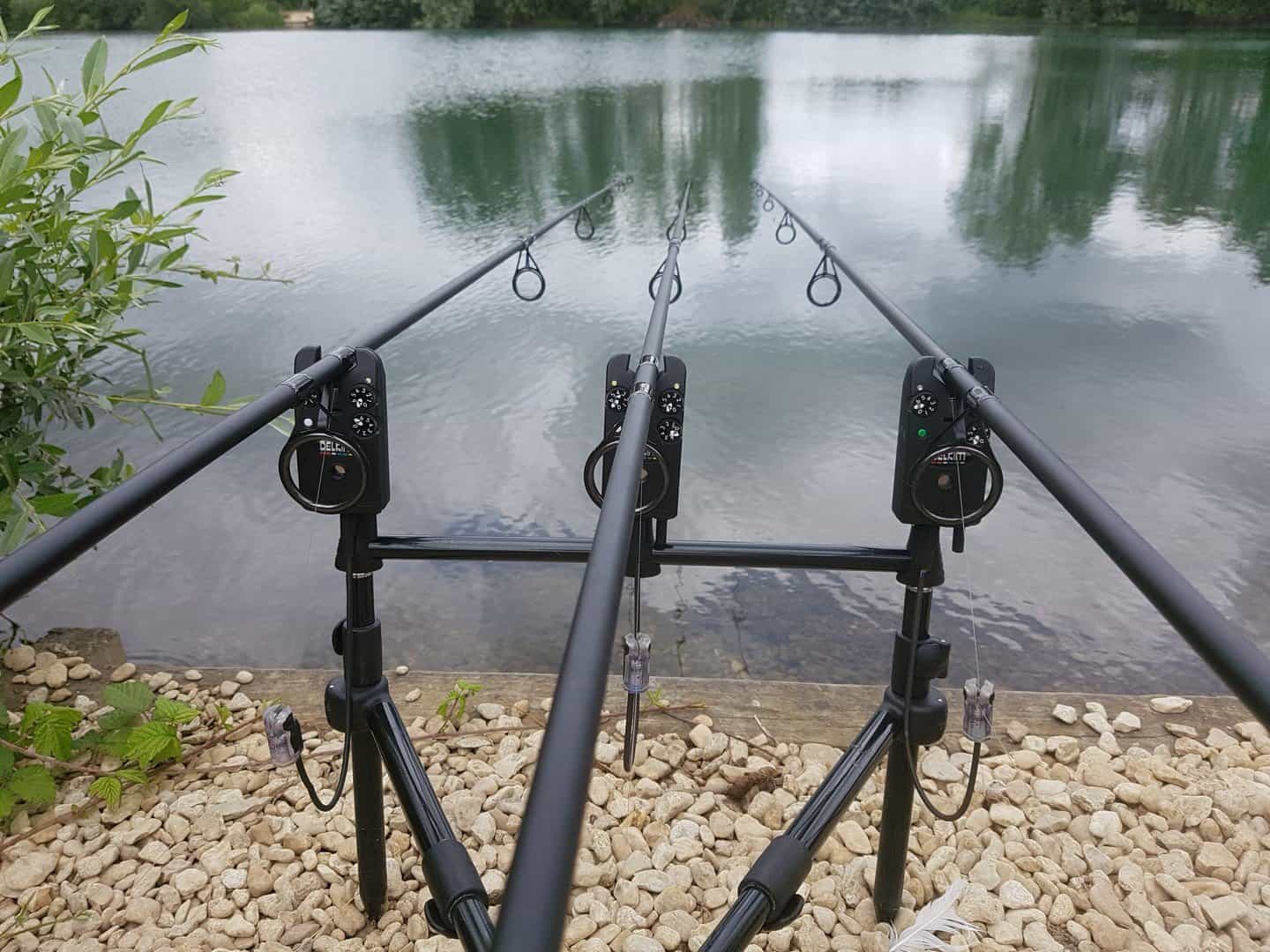
Best Budget Bite Alarms for Carp Fishing
Today, we're reviewing some of the best budget bite alarms. These are great value for the money. There are a variety of features that these budget alarms have to offer. There are many different types of bite alarms that people can choose from, and in all honesty,...

The Ultimate Guide to Electric Carp Fishing Barrow Conversions
An electric carp fishing barrow is a fishing vehicle that is powered by electricity, rather than gas or diesel. These barrows are becoming increasingly popular in the carp fishing industry due to their many benefits. Some of the top benefits of electric barrows...
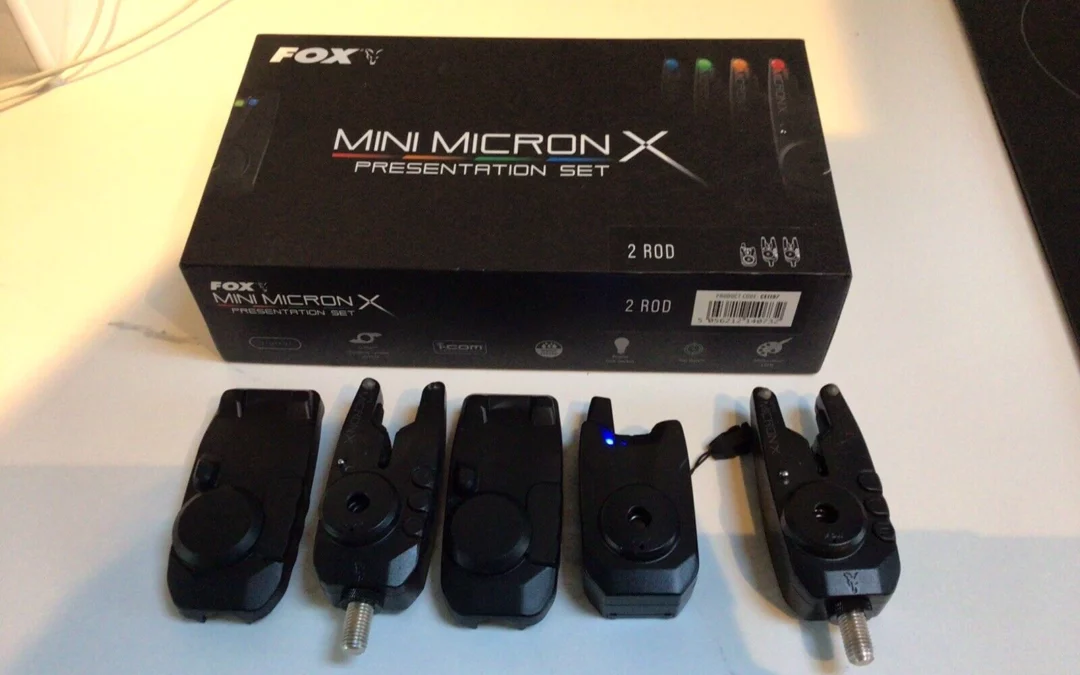
Why the Fox Mini Micron X Bite Alarm Set is the Best Choice – Review
Carp anglers rely on bite alarms to detect when a fish has taken their bait. There are many different types of bite alarms on the market, so it can be tricky to choose the right one for your needs. In this blog post, we'll take a look at one of the best bite alarms...

Best Polarised Sunglasses For Fishing (2023 Update)
When choosing polarised sunglasses for fishing, make sure that they are comfortable to wear and minimize surface glare. For fishermen, polarised sunglasses are a must-have. These are designed to reduce the glare from the water and make it easier to spot your prey....
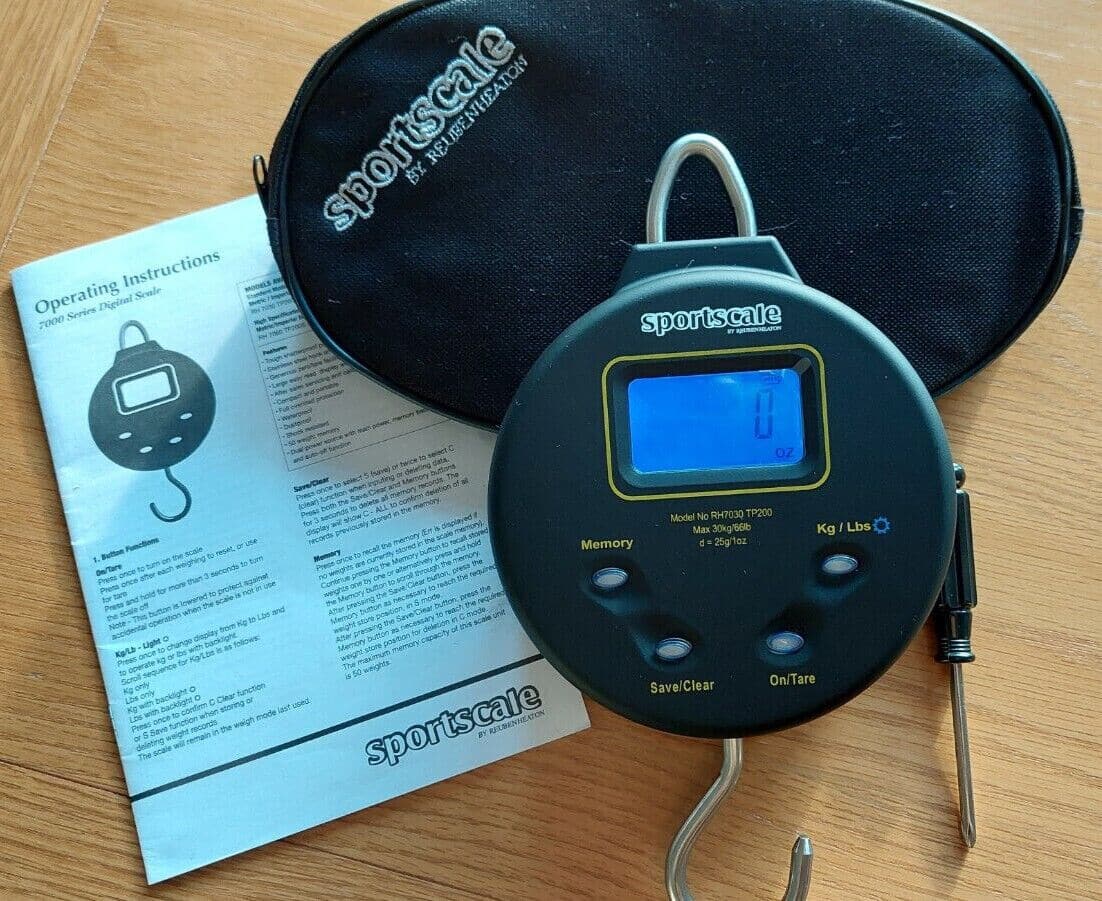
20 Best Carp Fishing Scales Reviews inc. Comparison Table
20 Carp Fishing Scales Reviews and Compared Carp Fishing Weighing Scales are one of the most essential items in our angling lives. Although we all assume that these are incredibly accurate, how precise are they? When it comes to catching a big brute, it’s important to...
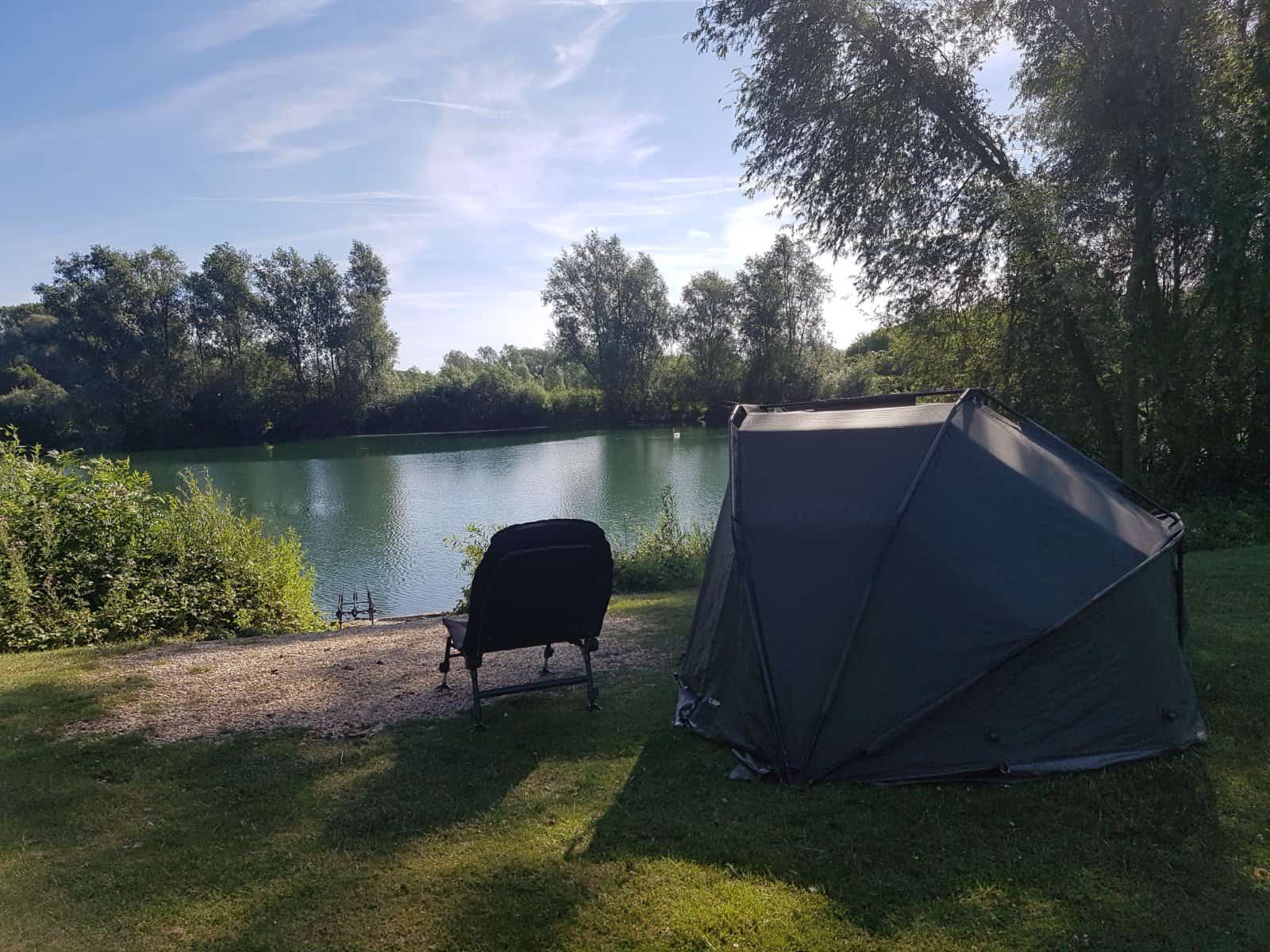
Best Bedchair for Carp Fishing – For a Good Nights Sleep in 2023
What's the Best Bedchair on the Market? Table of Contents We've selected some of the best bedchairs for fishing from various brands to give you the best possible choice. Some of these compact models are great for transporting, while others offer wider beds and better...

Bivvy Buyers Guide | The Best Fishing Bivvy for 2023
What To Look For When Buying a Bivvy There are a few points you need to consider when choosing the best fishing bivvy to suit your requirements. You need to first think about what features your bivvy needs to have before purchasing one. Many anglers have multiple...
I have made a lot of mistakes during my fishing sessions and don’t want you to make the same mistakes. I’ve learned the hard way over 20 years of fishing most weekends, testing, tweaking, and testing again and now want to help you excel with your carp fishing.
If you need any help, you can reach me at Fishing Again’s Facebook page
Last Updated on February 5, 2024 by Shane



